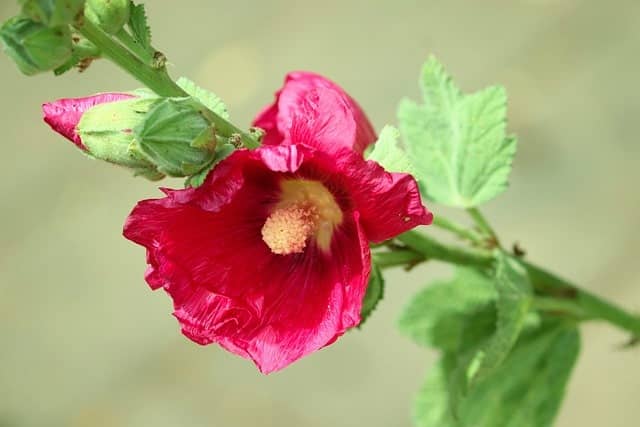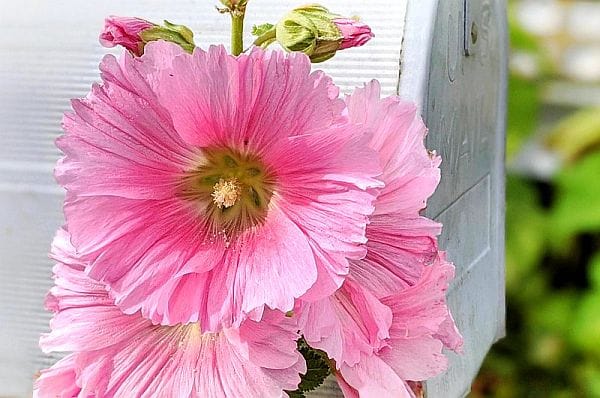This post may contain affiliate links. As an Amazon Associate we earn from qualifying purchases.
If you’re very careful, and the gardening fairies are with you, you can successfully transplant hollyhock.
Any gardener that has spent time researching which plant to use to hide ugly garden “features” knows the value of the hollyhock (Alcea rosea).
Sure, it’s gorgeous when lounging around in a cottage garden, but it also does a great job of taking something that’s not so attractive and turning it into a focal point. Related to the hibiscus, the tall stalks of gorgeous flowers appear biennially and mainly in USDA plant hardiness zones 3 through 9.
Mature hollyhocks have long tap roots so transplanting it may kill it. That said, if you simply must move the plant, do so now – in fall — and do so carefully. Where to plant the hollyhock
Where to plant the hollyhock
As soon as it finishes blooming, cut the flower stalks to about 5 inches in height. Then, start scouting a new location. Hollyhocks require lots of sunshine and little wind (the stalks can snap easily when winds gust).
The most important aspect of the hollyhock’s new location is the soil. Ensure that it drains quickly by digging a hole, about 1-foot in depth, and filling it with water. Wait for the water to drain away and then repeat the process.
On the second go-round the water may not drain completely away so measure the depth after one hour. Wait for another hour and then measure again. If it hasn’t drained at least one inch in that hour you’ll need to either find another spot with better-drained soil or do some major work fixing the soil.
If all is well on the other hand, mix about 2 inches of compost into the native soil in the planting area and wet the soil until it’s moist to about a foot deep.
 Now comes the delicate part
Now comes the delicate part
Water the hollyhock the day before you plan on planting it – you’ll want the roots to be full of moisture when you remove the plant from the soil.
When you dig it up, try to get as much of the roots as possible and rest it in a bucket of water while you dig the new planting hole. It should be twice as wide as the rootball and the same depth.
I always like to fill a planting hole halfway with soil and then the rest of the way with water, allow the water to drain and then finish filling with soil. The water should settle the soil and remove air pockets.
Aftercare of the hollyhock
The hollyhock will need plenty of water for a month or two after transplanting — at least an inch a week. As we head into late fall, heat shouldn’t be a problem in most parts of the country, but if it does get warm, remember that you may need to water more frequently.



